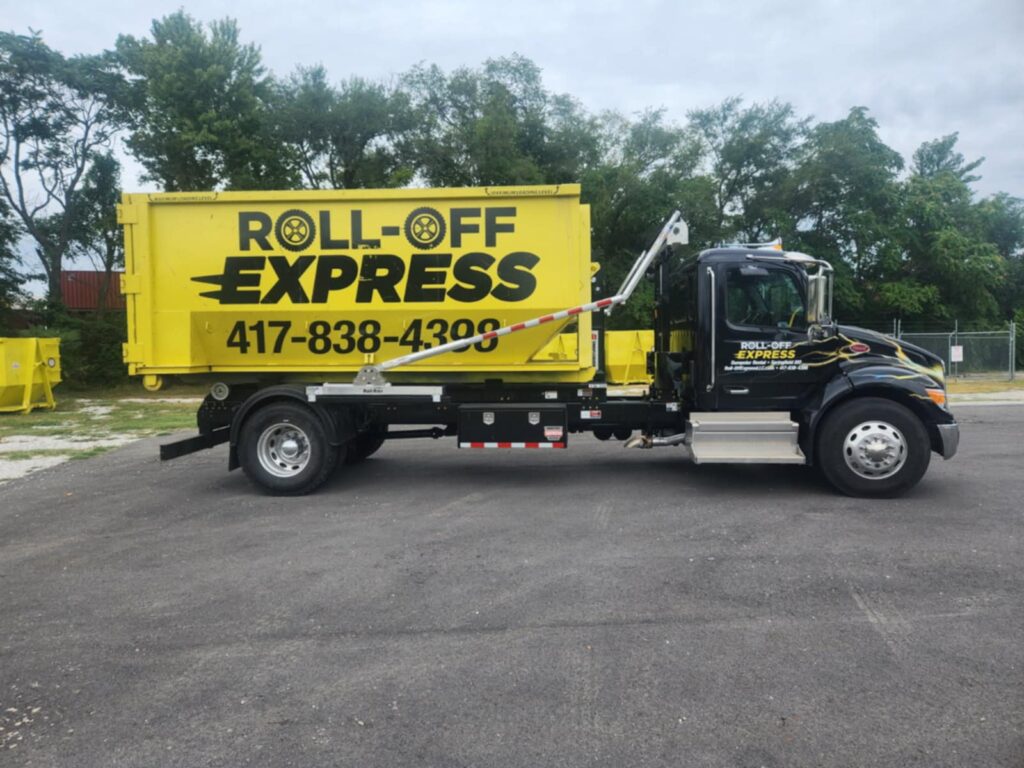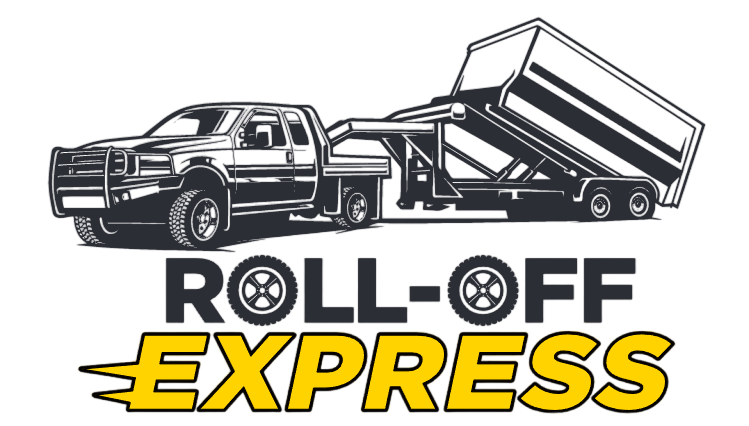Dumpster Rental Springfield MO – Easy, Reliable, and Affordable
Dumpster Rental Springfield MO – Easy, Reliable, and Affordable

When planning a remodel, cleanout, or construction project, dumpster rental Springfield MO is the easiest way to handle debris and waste removal. Roll-Off Express offers affordable dumpster rentals with prompt delivery and pickup services, making it simple to dispose of items from residential and commercial projects.
Whether you’re decluttering your home, managing construction debris, or handling yard waste removal, dumpsters come in various sizes to match your specific needs. With transparent pricing, reliable service, and eco-friendly waste disposal, Roll-Off Express helps you waste responsibly while keeping your Springfield project on schedule.
Choosing the Right Dumpster Rental in Springfield
Selecting the right dumpster starts with understanding your project needs and rental duration. Roll-Off Express provides dumpster rental in Springfield for everything from home cleanouts to commercial projects.
Selecting the Right Dumpster Size
Dumpsters are perfect for managing household junk, yard waste, and general construction debris. We’ll help you choose the right size to maximize space and minimize additional fees.
- 10-yard dumpster: Ideal for small decluttering or yard waste jobs.
- 15-yard dumpster: Great for home cleanouts or a small remodel.
- 20-yard dumpster: Handles medium residential and commercial projects.
- 25-yard dumpsters: Suited for significant renovation or larger construction debris.
If you’re unsure, our local expertise ensures you’re selecting the right dumpster size for your project timeline and truck loads.
Flexible and Affordable Dumpster Service
We offer flexible rental periods so you can keep your dumpster rental for as long as you need. Whether it’s a one-day job or a multi-week rental period, our team adapts to your project timeline. Each roll off dumpster includes delivery and pick-up, waste disposal, and recycling whenever possible. It’s an easy and affordable way to handle cleanup without stress.
Dumpster Sizes and Features
10-Yard and 15-Yard Dumpsters
Our smaller dumpsters are great for decluttering, yard waste, or home cleanouts. These dumpsters fit easily in most driveways and are delivered quickly to your property. They are equipped to handle small remodels, minor waste removal, and household junk.
20-Yard Dumpsters
The 20-yard option is one of our most popular sizes for dumpster rental in Springfield. It’s large enough for residential and commercial projects, yet compact enough for limited spaces. Perfect for remodels, construction debris, or medium-sized cleanouts.
25-Yard Dumpsters
Our 25-yard dumpsters are designed for major cleanups or significant renovation work. These units can handle truck loads of general construction waste, yard waste, and junk removal needs for larger properties.
Each size dumpster comes with an upfront, detailed quote—no surprises, no hidden charges.
Responsible Waste Management and Local Expertise
At Roll-Off Express, we promote eco-friendly waste disposal. Our team ensures that prohibited items and hazardous materials are never placed inside the dumpster. We separate and recycle certain types of waste, maintaining environmentally responsible practices that align with local regulations.
We’re committed to responsible waste management and proper waste disposal so Springfield remains clean and sustainable.
Prompt Delivery and Pick-Up Services
Our dumpster rental company prides itself on prompt delivery and pickup services. Every dumpster delivered is positioned carefully by experienced drivers who understand placing dumpsters safely on your property.
We provide drop-off dumpster in Springfield with easy to work scheduling and pickup services once your project is complete. Whether you need a dumpster for one day or several weeks, we maintain reliable service that fits your project timeline.
Benefits of Renting a Dumpster with Roll-Off Express
Easy Waste Removal in Springfield
Renting a dumpster from a trusted dumpster rental company helps you handle waste removal in Springfield efficiently. You can dispose of household junk, yard waste, or construction debris without multiple trips to the dump.
Each affordable dumpster includes delivery and pick-up, recycling, and waste disposal—everything needed for a complete cleanup solution.
Transparent and Upfront Pricing
We believe in transparent pricing and upfront communication. The total cost includes delivery, pick-up, landfill fees, and the rental period. If you go over the weight limit, exceeding weight limits is handled clearly with minimal additional fees.
Adaptable for Any Project
Whether you’re decluttering, remodeling, or tackling commercial projects, we’ll help you choose the right dumpster for your specific needs. Our dumpster rental service is designed for both residential and commercial projects, ensuring convenience, affordability, and responsible waste handling every time.
Need a Dumpster? Contact Roll-Off Express for Reliable Dumpster Rentals in Springfield MO
If you’re searching for Springfield dumpster rental that’s affordable, eco-friendly, and easy to work with, Roll-Off Express is here for you. We provide roll off dumpster solutions for waste removal, cleanouts, and construction debris management across Springfield, Missouri 65802.
Our team delivers affordable dumpster rentals with prompt delivery and pick-up to suit your rental duration and project needs. Each dumpster rental service includes flexible scheduling, upfront costs, and responsible waste management practices.
We’re equipped to handle everything from yard waste removal to commercial dumpster jobs with environmentally responsible methods. Our local expertise and dedication to reliable service make Roll-Off Express the top choice for dumpster rental MO.
If you’re starting a remodel, decluttering, or planning waste removal in Springfield, trust Roll-Off Express for prompt delivery, transparent pricing, and the right dumpster for your specific needs. Call now (417) 838-4398 or email us today to get a detailed quote and dumpster delivered to your property. Choose the right dumpster rental Springfield MO and experience easy and affordable waste management done right.

Roll-Off Express
Springfield, Missouri 65802
(417) 838-4398
